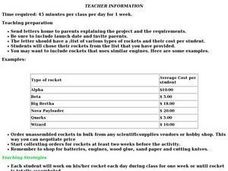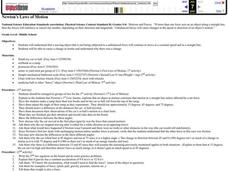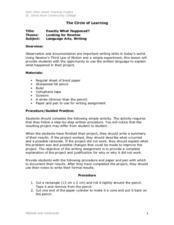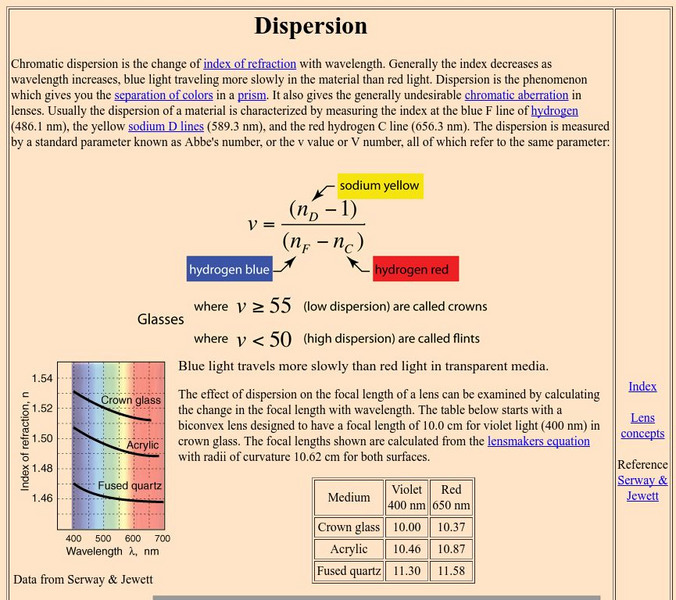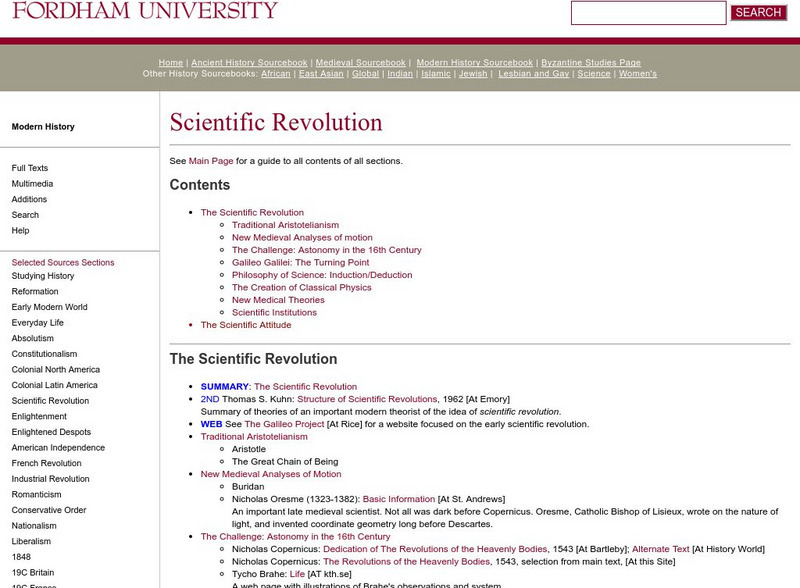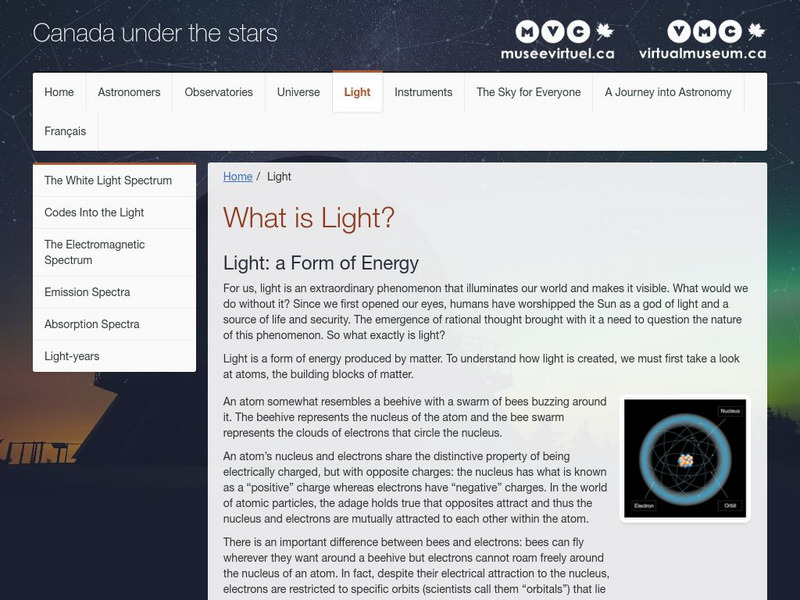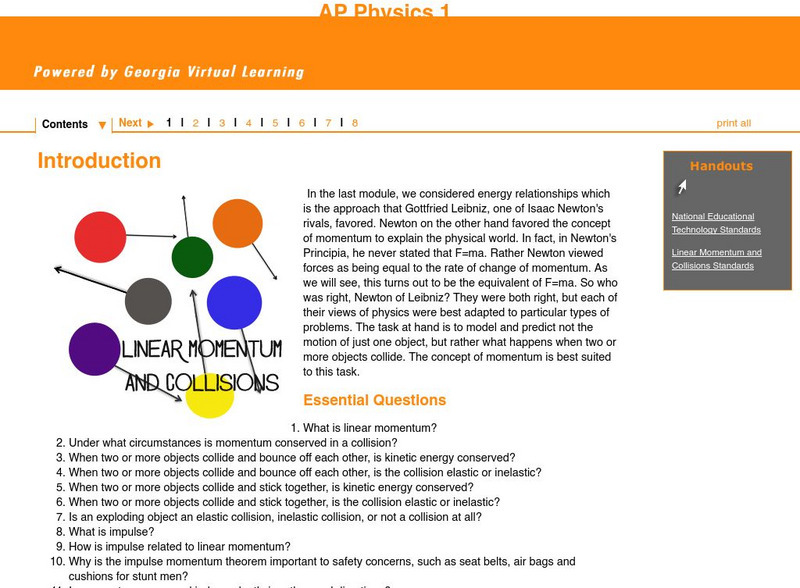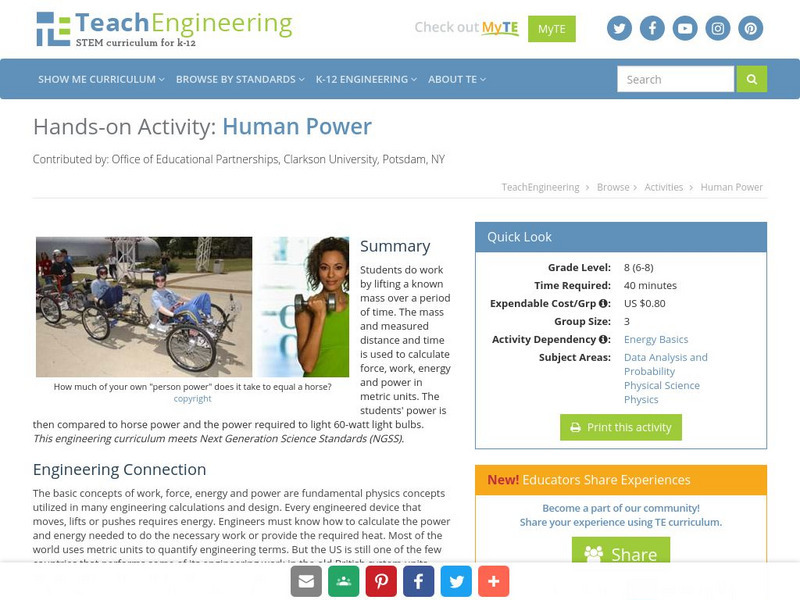Curated OER
America's Pastime
Young scholars relate Newton's Laws of Motion to the game of baseball. They compare and contrast the materials used in baseballs that could affect their performance. They also determine how friction can be increased or decreased in a...
Curated OER
Building and Launching Rocket Kits
Students, in groups, build and decorate rocket kits and then launch them.
Curated OER
Force and Motion
In this force and motion worksheet, middle schoolers read six paragraphs with numbered sentences about force and the laws of motion and answer one question.
Curated OER
Newton's Third Law
Students use inquiry and observation to explore Newton's third law of motion: for every action there is a reaction. In this physics lesson, students rotate through six stations set up with materials and picture directions illustrating an...
Curated OER
Newton's Laws of Motion
Students perform three activities that each demonstrate one of Newton's Laws of Motion. They use a ramp and toy car to demonstrate inertia, calculate acceleration due to gravity, then use a medicine ball and rolling chair to demonstrate...
Curated OER
Rockets
Students are introduced to a project involving rockets. After chosing a rocket of their own, they assemble them in class and use an open field for launching them. They relate the path of their rocket to Newton's Second and Third Laws...
Curated OER
Stellar Spectral Fingerprints
Students listen as the teacher introduces Newton's early discovery of the diffraction of light. They use multiple sources of light (fluorescent, incandescent, sunlight, etc) to bend the light. They first use a prism then a diffraction...
Curated OER
Looking For Newton
The instructional activity has sufficient background information for the teacher to implement the instructional activity. Students are asked to summarize the three laws of motion. They also conduct classroom activities to role play the...
Curated OER
The Circle of Learning
Students review Newton's Third Law of Motion and participate in an experiment. After the experiment, they use their notes to write a scientific summary of what happened during the project. They present their project to the class and...
Curated OER
Looking for Newton
Pupils discuss the rhyming pattern of various types of poetry. With a focus on limericks, they follow the specific rhyme scheme and create a limerick about Newton. They share their poem with the class and write another one related to his...
Curated OER
Graphing Inertia: An Oxymoron?
Eighth graders investigate Newton's Law of Inertia in order to create a context for the review of the use of different types of graphs. They practice gathering the data from an experiment and put it into the correct corresponding graph.
Curated OER
Rocket Me into Space
Fourth graders study the concept of thrust and how it propels rockets into space. They discover why airplanes cannot travel into space while considering the engineering techniques use in designing rockets. They look at how space...
Curated OER
Newton's Second Law: Mass-Acceleration Relationship with Dynamics Carts
Students form their own hypothesis about the relationships between force, mass, and acceleration for their dynamics cart system. They collect data and express it in a graphical format to visualize the relationships.
Curated OER
It's All in the Wrist
Students conduct experiments with balloons, pennies, marbles and cups to help them understand the concept of centrifugal force or Newton's Law of Motion.
NASA
Ltp: Rocket Principles
Excellent NASA sponsored site on the principles of rockets. The site relates Newton's 3 laws to the flight of a rocket. Site also has links to activities related to rockets in addition to links about practical rocketry.
Georgia State University
Georgia State University: Hyper Physics: Dispersion
The phenomenon of light dispersion is explained with a formula and a practice form for calculating Abbe's number.
Internet History Sourcebooks Project
Fordham University: Modern History Sourcebook: Isaac Newton
This site from Fordham University links to excerpts of Newton's major works. Please scroll down to find the section on Newton titled "The Creation of Classical Physics." You will be able to actually read some of Newton's work! Read...
Internet History Sourcebooks Project
Fordham University: Modern History Sourcebook: Letters on Newton
An interesting site from Fordham University that provides letters Voltaire wrote regarding Newton and his work.
Internet History Sourcebooks Project
Fordham University: Modern History Sourcebook: Principles of Natural Philosophy
This site from Fordham University is an exerpt from Newton's famous "Principia."
University of St. Andrews (UK)
University of St. Andrews: Newton Raphson Method
Detailed site explaining the Newton Raphson method. The site contains an example and links to more related information.
Other
Vmc: What Is Light?
What is light? A detailed examination of what creates light, light spectrums, scientists' discoveries, and colored graphics. Appropriate for the older student or adult researcher.
Georgia Department of Education
Ga Virtual Learning: Ap Physics 1: Linear Momentum and Collisions
This physics tutorial aims to model and predict not the motion of just one object, but rather what happens when two or more objects collide. The concept of momentum will be the main focus of this module.
TeachEngineering
Teach Engineering: Human Power
Students do work by lifting a known mass over a period of time. The mass and measured distance and time is used to calculate force, work, energy and power in metric units. The students' power is then compared to horse power and the power...
TeachEngineering
Teach Engineering: Action Reaction! Rocket
Students construct a rocket from a balloon propelled along a guide string. They use this model to learn about Newton's three laws of motion, examining the effect of different forces on the motion of the rocket.



